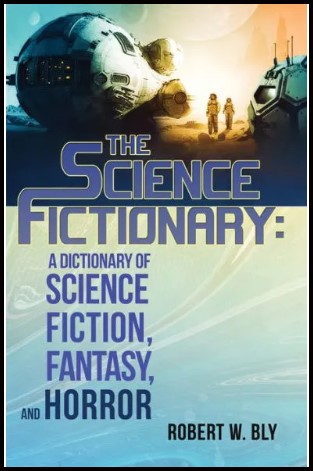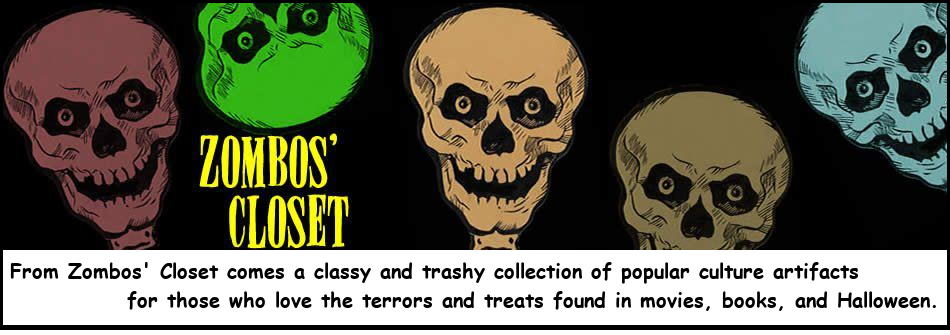 Zombos Says: Good
Zombos Says: Good
This book review first appeared in The Horror Zine.
While writing this review I glanced over to my bookshelves. I am an all-day sucker for reference books, dictionaries of this or that, encyclopedias, guides, and all popular culture compendiums. Right off the bat, I spied The Dictionary of Satanism, The Dictionary of Imaginary Places, and Brave New Words: The Oxford Dictionary of Science Fiction. Out of sight were the Doctor Who and Star Trek dictionaries, and a dozen or so similar books invaluable to any writer or reader of any fictional universe.
The Science Fictionary by Robert W. Bly is a needed addition to the reference shelf with essential tidbits, descriptions and definitions across its pages, fostering those neat nostalgic flashbacks or wonderful new explorations into the many threads that weave the fabric of our literary and cinematic cultures. The strength of Mr. Bly’s work is that he has the temerity to include horror and fantasy along with the science fiction. Honestly, although horror makes the hard money, it is science fiction that usually brings prestige; and fantasy often splinters between both, creating a pivot that can go either way. Science fiction dictionaries focus mostly on literary sources, too, which can all be very snobbish indeed. Bly goes against such convention and his ambitious undertaking finally brings the whole media family together, creating a more rewarding and enriching experience for the modern, multi-faceted fan, who realizes one does not live by just science fiction or fantasy or horror, but is enriched by all three.
Pulling from rich sources that include movies, books, mythology, and television series, there are entries like my childhood favorite anime, ‘Tobor’, the 8th Man, a robot who ‘smokes’ cigarette-like power cells to recharge, and ‘Ubik’, an aerosol spray that gives people new vigor and energy. The Oxford Dictionary of Science Fiction does not mention these. It also does not mention ‘Asphyx’ or ‘Drakulon’, but Bly does. Any knowledgeable comic book fan knows that Drakulon is Vampirella’s home planet. And for anyone into odd, little known horror movies, the Asphyx is the aura that surrounds people just before they die and also refers to the name of the creature ready to snatch it away (as well as the title of the movie). Bly may make some new fans by including such entries.
His entries vary between common inclusions and ones you may not find elsewhere. His writing style is concise and leaves out dates and extensive source citations, making for a more casual reading focused on explanations. At times, those explanations could use a little more depth. For instance, reading the ‘Jefferies Tubes’ entry, while the description notes they are maintenance conduits aboard Starfleet vessels, the origination of the term is missing but important. An extra sentence pinning that unique set design to Matt Jefferies, who designed the original Enterprise, is an important acknowledgement. The same can be said for the ‘Dalek’ entry, where Peter Nation, who thought of the famous cyborg enemy of Doctor Who, along with Raymond Cusick’s stark design, should also be cited. But then Bly goes one better than the Oxford Dictionary of Science Fiction by giving a better description of the Daleks and even mentions Davros, their infamous creator.
If you are thinking that today’s internet, Wikipedia, and various online fan-related dictionaries and resources make books like The Science Fictionary obsolete, you would be wrong. Way wrong. Pick up a copy, either print or digital, page through it, highlight the new and relish the familiar, but explore its pages. You may just hear the words of Carol Marcus in the Wrath of Kahn: “Let me show you something that will make you feel young as when the world was new.”
Having all that science fiction, fantasy, and horror information finally in one book, at your fingertips, may just be that exhilarating for you.
